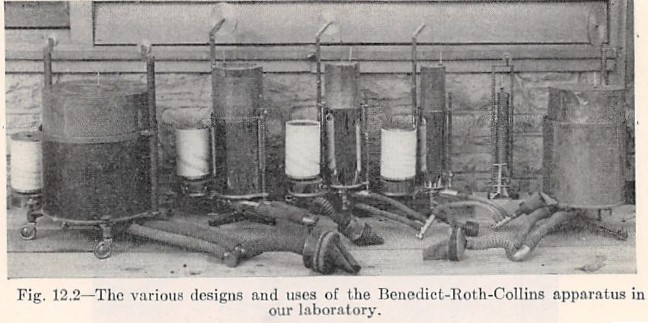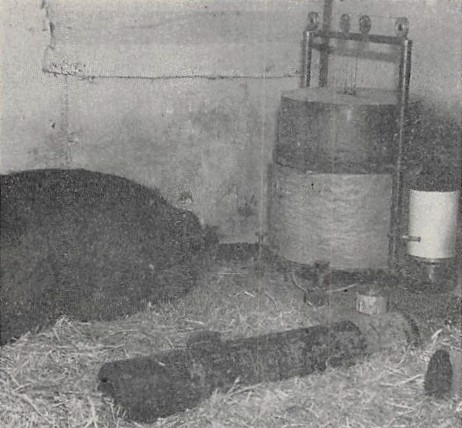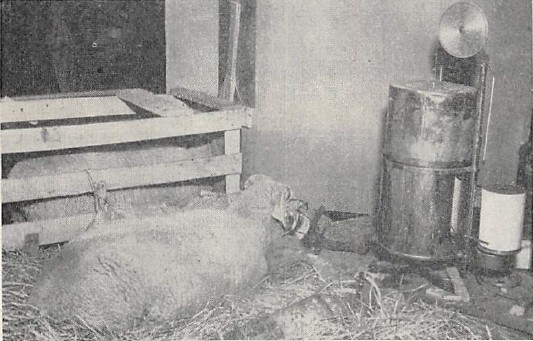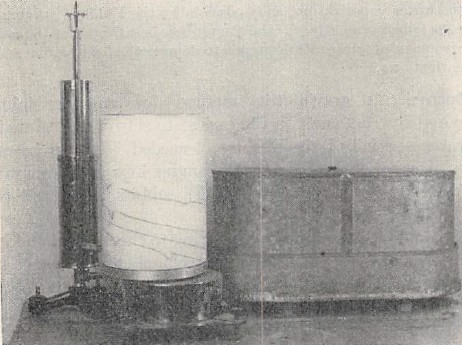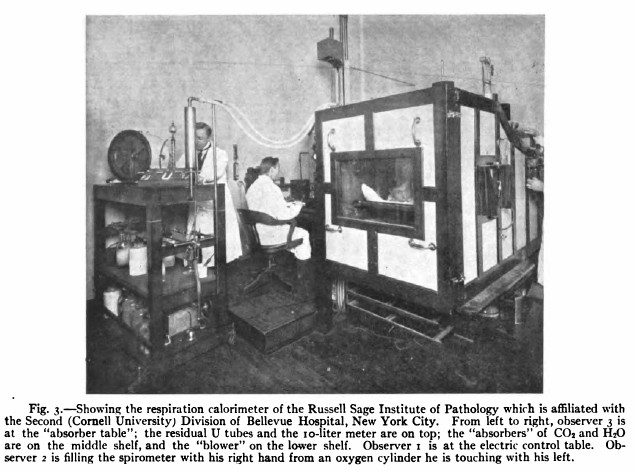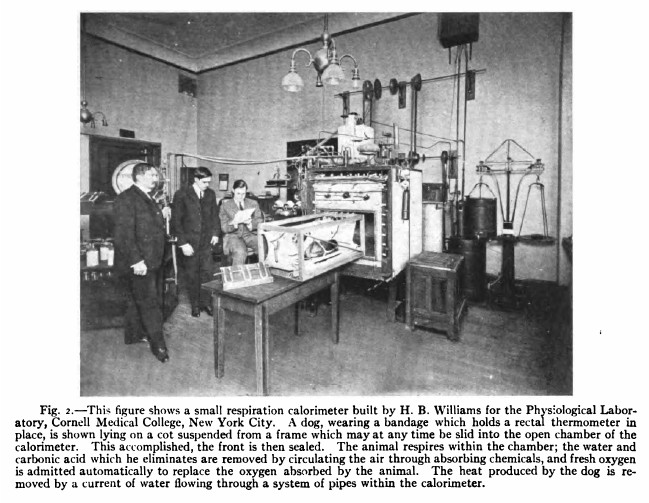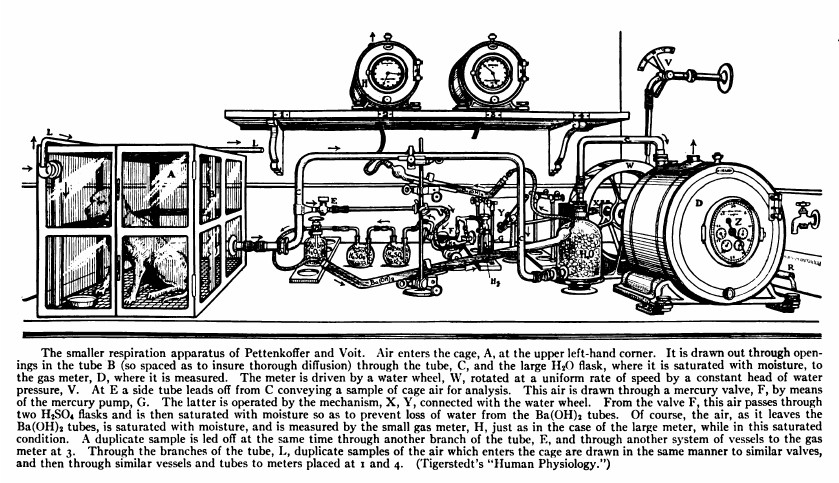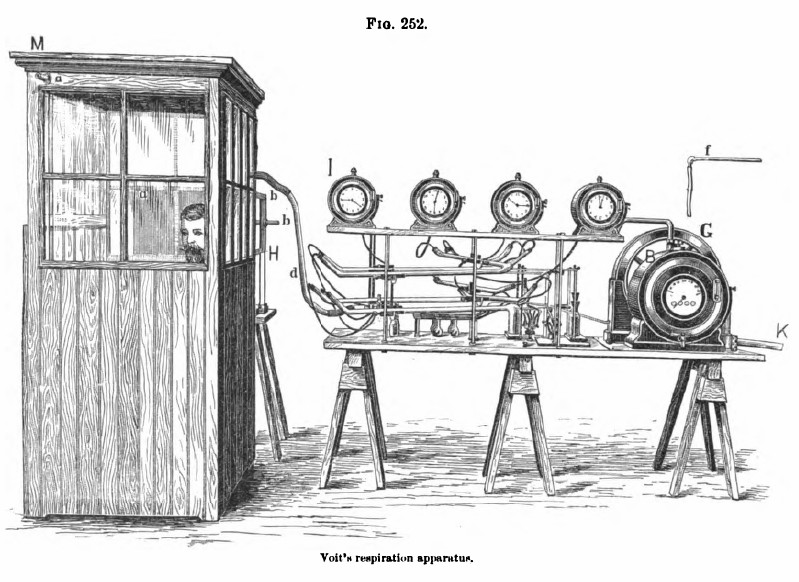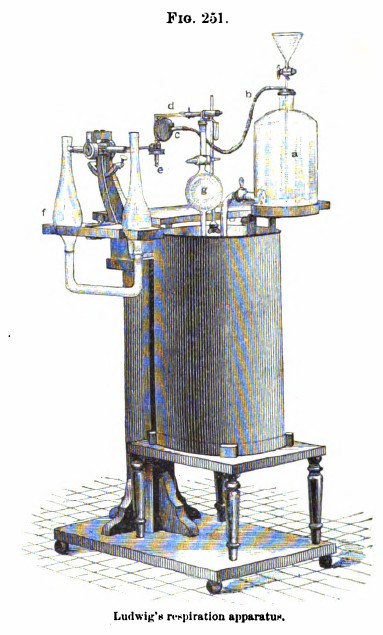From Bioenergetics and Grown by Samuel Brody, Published by Reinhold Publishing, NY, 1945. Chapter 12, page 317. Found on the website BeefEfficiency.org.
Category Archives: Basal metabolism
Spirometer, Benedict-Roth-Collins, 1945, Basal metabolism of cows
From Bioenergetics and Grown by Samuel Brody, Published by Reinhold Publishing, NY, 1945. Chapter 12, page 317. Found on the website BeefEfficiency.org.
Spirometer, Benedict-Roth-Collins, 1945, basal metabolism of pigs
From Bioenergetics and Grown by Samuel Brody, Published by Reinhold Publishing, NY, 1945. Chapter 12, page 318. Found on the website BeefEfficiency.org.
Spirometer, Benedict-Roth-Collins, 1945, basal metabolism of sheep
From Bioenergetics and Grown by Samuel Brody, Published by Reinhold Publishing, NY, 1945. Chapter 12, page 318. Found on the website BeefEfficiency.org.
Respiration Apparatus, Closed Circuit, 1945
Miniature water-seal spirometer used with a close-circuit system for measuring oxygen uptake in small animals. The animal(s) to be studied were placed in the small chamber at the right. A blower motor moved air from the chamber through a soda-lime absorber (not shown) and the overall volume of the system was monitored by the spirometer. The spirometer was identified as a Benedict-Roth-Collins. From Bioenergetics and Grown by Samuel Brody, Published by Reinhold Publishing, NY, 1945. Chapter 12, page 330. Found on the website BeefEfficiency.org.
Respiration Apparatus, Atwater and Benedict, 1910
Respiration Apparatus, Williams, 1917
Respiration Apparatus, Pettenkofer and Voit, 1860’s
Respiration Apparatus, Voit’s, 1887
From Treatise on human physiology by Henry Cadwalader Chapman, Published by Lea Brothers & Co, 1887, page 446.
“We therefore, usually determine at the same time the amount of carbonic acid and water exhaled by the system, and for this purpose we make use of Voit’s respiration apparatus. This consists, as constructed by C. Stollventner and Sohn of Munich (Fig. 252), of a chamber (H) in which the subject of the experiment, a large dog, for example, is placed; of a large drum, and pumps worked by a waterwheel for the production of a constant draught of fresh air through the apparatus; of bottles and tubes containing appropriate materials for the absorption of water and carbonic acid of the air surrounding the chamber, as well as that from within it; and of meters for registering the total amount of air that has passed through the chamber analyzed for comparison.”
Respiration Apparatus, Ludwig’s, 1887
From Treatise on human physiology by Henry Cadwalader Chapman, Published by Lea Brothers & Co, 1887, page 446.
“A more modern apparatus used by Ludwig and his pupils, differs from that of Regnualt and Reiset just described, not so much in principle as in certain mechanical details. The most noticeable of these is the ingenious contrivance by means of which the oxygen expired passes from g (Fig. 251) into the respiratory tube d, communicating through an air-tight covering with the nostrils of the animal at e, alternately with the passage of the carbonic acid expired into the bulbs f, and which is accomplished through the alternate expansion and contraction of valve c. For with the rarefaction of the air through inspiration the valve c is drawn from the end of the tube b, the effect of which is that the air entering the tube b drives the water out of a, which in turn drives the oxygen out of g into the tube d. On the other hand, with the condensation of the air through expiration, the valve c is forced back close to the end of tube b, the flow of oxygen from the tube d ceases, the carbonic acid exhaled passing into the bulbs f.”
